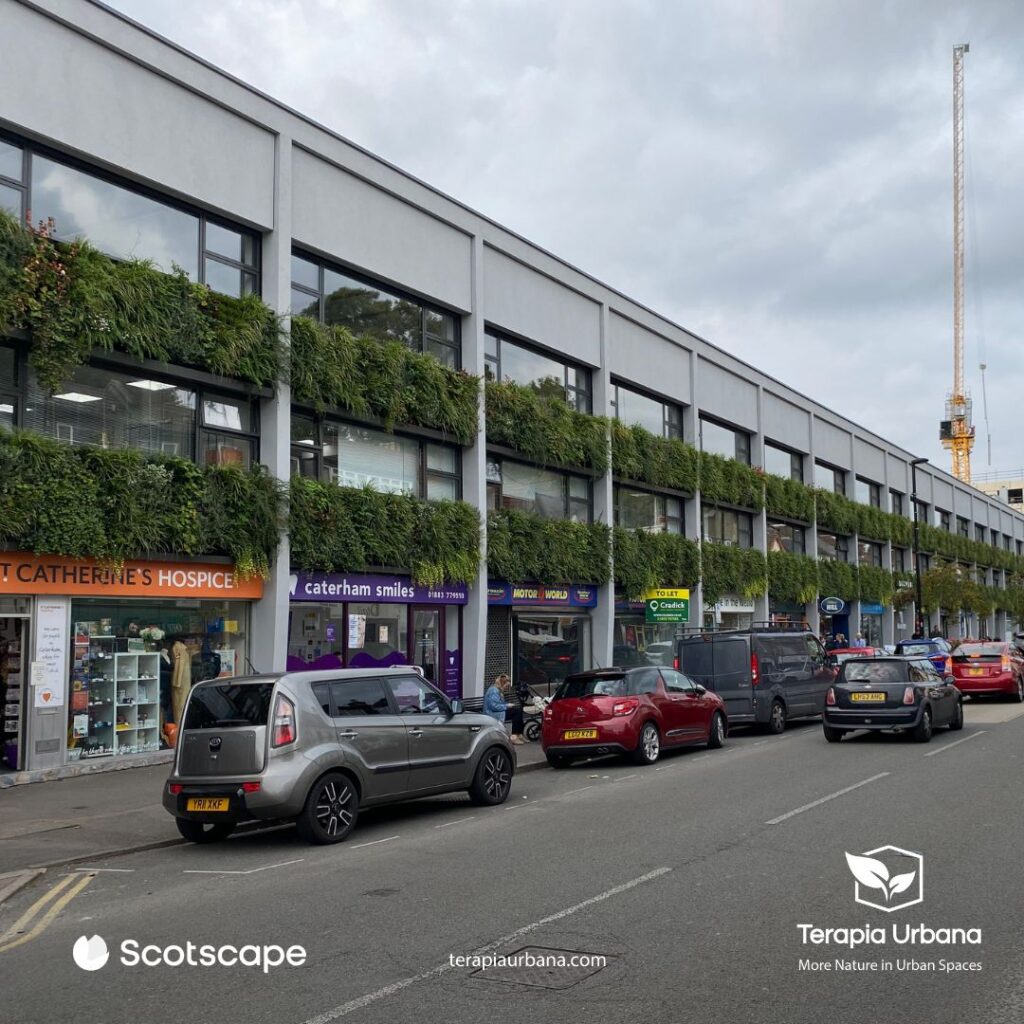Las Soluciones Basadas en la Naturaleza(NbS) se han consolidado como una estrategia clave para abordar los desafíos contemporáneos de las ciudades modernas. Al integrarse en los tres pilares básicos de la sostenibilidad —económico, ambiental y social—, estas soluciones ofrecen múltiples beneficios que son esenciales para el desarrollo urbano sostenible.
Beneficios Económicos de las SbN
La implementación de infraestructuras verdes urbanas, como los jardines verticales y techos verdes, embellece las ciudades y tiene un impacto positivo en la economía. Estos proyectos pueden atraer inversiones, aumentar el valor de las propiedades y reducir costes relacionados con la energía y la gestión del agua. Además, fomentan la creación de empleos en el sector de la economía verde, que ha experimentado un crecimiento significativo en los últimos años. Este crecimiento está redefiniendo tecnologías y contenidos, orientándolos hacia una economía de bajas emisiones de carbono.
Impacto Ambiental de las SbN
Las SbN son fundamentales para mejorar diversos indicadores ambientales. Las infraestructuras verdes contribuyen a la calidad del aire, al actuar como filtros naturales que atrapan partículas contaminantes y producen oxígeno. Asimismo, promueven la biodiversidad al crear hábitats urbanos para diversas especies, mejorando la salud de los ecosistemas locales. Estos espacios verdes también desempeñan un papel crucial en la mitigación del cambio climático, ya que ayudan a reducir el efecto de isla de calor urbana y gestionan de manera eficiente el agua de lluvia, disminuyendo el riesgo de inundaciones y promoviendo la recarga de acuíferos.
Beneficios Sociales de las SbN
En el ámbito social, las SbN mejoran la calidad de vida de los ciudadanos al proporcionar espacios verdes accesibles que fomentan la actividad física, reducen el estrés y mejoran el bienestar general. Estos espacios también pueden servir como lugares de encuentro comunitario, fortaleciendo el tejido social y promoviendo una mayor cohesión entre los residentes. Además, la creación de infraestructura verde puede incentivar la participación ciudadana en proyectos comunitarios, generando un sentido de pertenencia y responsabilidad hacia el entorno urbano.
Medición de la Sostenibilidad a través de Infraestructura Verde
La presencia y calidad de la infraestructura verde urbana son indicadores clave en la medición de la sostenibilidad de un país. Factores como la calidad del aire, la biodiversidad, la salud ambiental, la vitalidad de los ecosistemas y la capacidad de adaptación al cambio climático son directamente influenciados por la implementación de SbN. Estos indicadores no solo reflejan el estado ambiental de una nación, sino que también afectan su atractivo y competitividad a nivel global.
Creación de un Sector Laboral Verde
El enfoque en SbN impulsa la creación de un sector laboral vinculado a la economía verde. Este sector no solo proporciona empleo, sino que también promueve el desarrollo de habilidades y conocimientos especializados en tecnologías sostenibles. La economía verde está redefiniendo los contenidos educativos y tecnológicos para adaptarse a las necesidades de una sociedad que busca reducir sus emisiones de carbono y adoptar prácticas más sostenibles.
Las Soluciones Basadas en la Naturaleza son una herramienta poderosa para impulsar la sostenibilidad urbana. Al integrar beneficios económicos, ambientales y sociales, las SbN no solo mejoran la calidad de vida de los ciudadanos, sino que también contribuyen a la resiliencia de las ciudades frente a los desafíos ambientales. La infraestructura verde urbana se erige como un componente esencial en la medición de la sostenibilidad de un país, destacando su importancia en la transición hacia una economía de bajas emisiones de carbono. Implementar y promover SbN es, sin duda, un paso crucial hacia un futuro más sostenible y habitable para todos.

